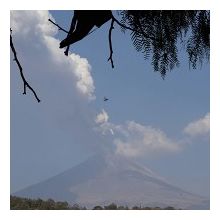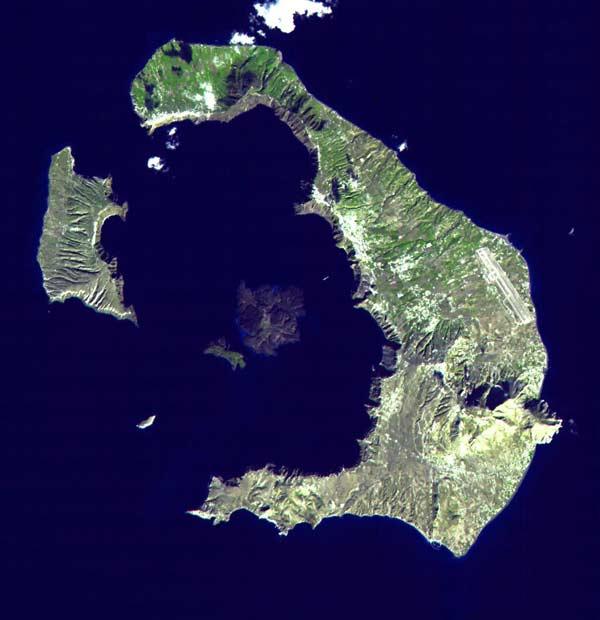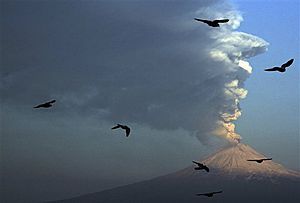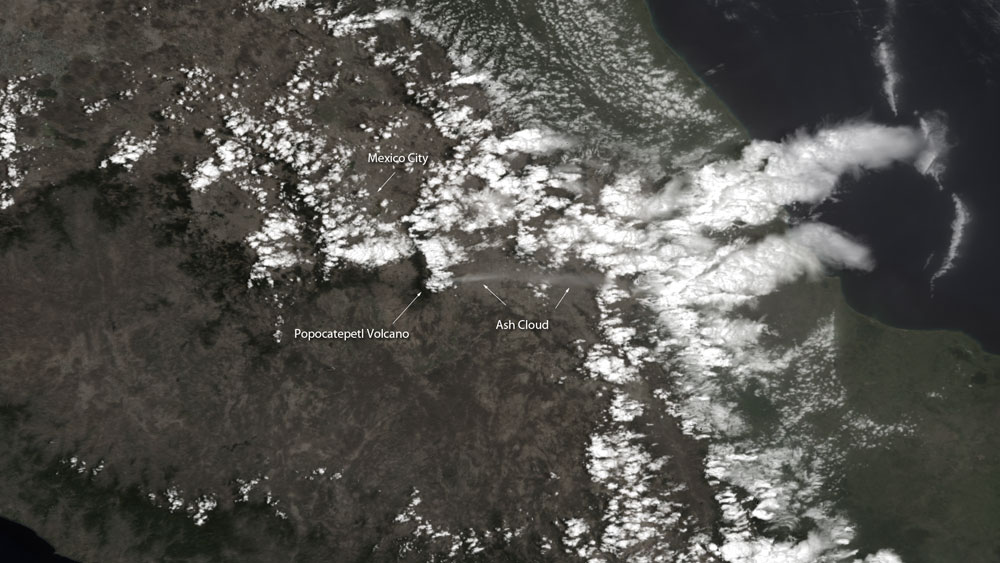
© Associated PressA plume of ash and steam rises from Popocatepetl volcano in Mexico.
A 17,886ft volcano outside Mexico City has exhaled dozens of towering plumes of ash and shot fragments of glowing rock down its slopes, frightening the residents of surrounding villages with hours of low-pitched roaring not heard in a decade.
A white cloud of ash, gas, water vapour and superheated rock spewed from the cone of Popocatepetl high above the village of Xalitzintla, whose residents said they were awakened by a window-rattling series of eruptions.
Mexico's National Disaster Prevention Centre said that a string of eruptions had ended in the early morning, then started up again at 5.05am, with at least 12 in two hours.
"Up on the mountain, it feels incredible," said Aaron Sanchez Ocelotl, 45, who was in his turf grass fields when the eruptions happened. "It sounds like the roaring of the sea."
The white cone of Popo, as most call the mountain, is an iconic backdrop to Mexico City's skyline on clear days, but its 40-mile distance means even a moderately large eruption is unlikely to do more than dump ash on one of the world's largest metropolitan areas.
It is a different matter for the villages on the flanks of the volcano, where the quiet of the corn fields and fruit orchards was pervaded by the volcano's spooky roaring.
"Everyone needs to take this seriously. This buzzing, this roaring isn't normal," said Gregorio Fuentes Casquera, the assistant mayor of Xalitzintla, a village of 2,600 people about seven miles from the summit. He said the town had prepared 50 buses and was sending out its six-member police forces to alert people to be ready to evacuate.




